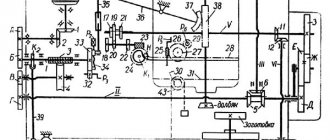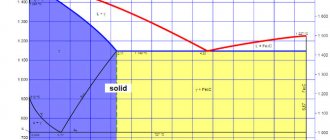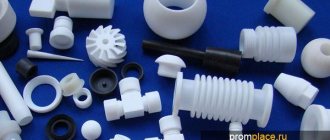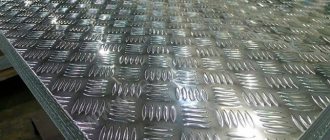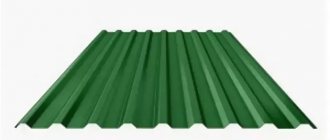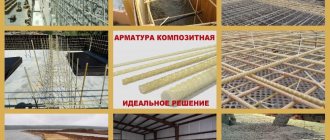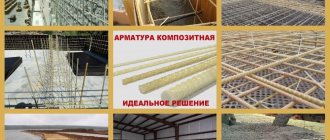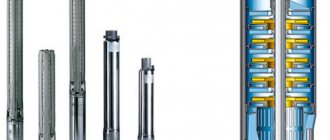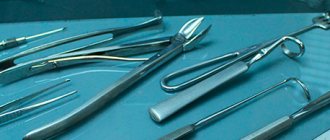Currently, there are a large number of different vacuum devices and elements. This prevalence is associated with a great demand from companies to use such equipment, which activates the process of production, testing and other manipulations with various families of substances. This spread has not spared the concept of pressing, which has a large number of modifications and methods of application.
Systems for the purpose of vacuum pressing combine a number of different vacuum elements that interact with each other throughout the entire process to achieve the required result. This facilitates a fairly long period of continuous operation, without loss of performance and properties of the finished products.
Pressing system with vacuum bag
This equipment is used in those cases where it is necessary to connect flat, curved, ribbed and other types of planes to each other. In a similar way, typesetting three-dimensional products are formed and adhesive objects are bent. The most famous types of manufacturing where these types of equipment are widely used are furniture production and woodworking factories. We are talking about veneering boards and manufacturing various types of bent wood products. Among the objects that are formed with the assistance of the concepts of vacuum pressing with a vacuum bag, we can identify:
- Wooden furniture, doors and facades with a curved surface, and objects with convex parts;
- Almost all types of musical instruments;
- Decorative elements of stairs of complex shape;
- Details of the interior and exterior of buildings;
- All types of triplex for ceilings, tables, chandeliers, windows, doors, vintage, etc.;
- Complex large-sized objects made of composite materials.
The most common uses for vacuum pressing systems are:
- Furniture manufacturing factories;
- Construction and restoration of ships;
- Construction and restoration of aircraft;
- Automotive industry;
- Interior and exterior design.
For illustrative purposes, below are the standard elements that are part of a vacuum pressing system:
- Vacuum pump;
- Vacuum bag;
- Connecting flange with vacuum hose;
- Set of filters;
- Sensors and vacuum gauges;
- Shut-off valve;
- Air inlet valve;
- Sealing clamp, for processed materials whose length is less than 1 m less than the size of the vacuum bag.
How to choose the right equipment
When choosing a membrane-vacuum press to solve certain problems, you should focus on its most important parameters.
Pump brand and country of origin
Vacuum presses can be equipped with pumps from foreign (usually Italian) or domestic manufacturers. In the first case, a membrane vacuum press will cost more, but the pump installed on it will be more reliable. Meanwhile, domestic vacuum pumps are also quite reliable, but most importantly, there should be no problems with their repair, since finding spare parts for domestic pumping equipment is not particularly difficult.
The reliability and performance of the press depends primarily on the vacuum pump
Vacuum table lining material
It is very important that it is metal, and not chipboard sheets, which some manufacturers use for such purposes. After a short period of use, tables made from chipboard will simply become unusable.
Dimensions
This is one of the most important characteristics that you should pay special attention to when choosing a membrane vacuum press. The dimensions of the vacuum press primarily determine the number of workpieces that can be processed on it simultaneously. Naturally, the larger this quantity, the more productive the vacuum press will be. Meanwhile, it should also be taken into account that the size of the equipment directly affects its cost, so in this case the best option should be chosen.
Vacuum presses are manufactured in standard sizes, for example, for veneer veneering, the most commonly used sizes are 2500x1500, 3000x1500, 2500x1200 or 3000x1200 mm
Type of heating devices
The vast majority of experts advise choosing vacuum presses equipped with KGT lamps, when using which the film glued to the top of the bent parts does not melt or burn through. In the same case, if you select equipment equipped with heating elements, you will have to constantly monitor that the distance from such heating elements to the very top of the workpiece surface is at least 150 mm.
Press brand
Since vacuum presses are quite expensive equipment, it is not worth choosing a device from unknown manufacturers, which will then have to be constantly repaired.
Operating principle of the pressing system
The principle of operation involves the process of creating a vacuum environment around the parts to be glued, which allows you to remove all air bubbles and create a maximum density of pressing force on each other surfaces, for fixing them with an adhesive composition to each other. The stages of pressing are as follows:
- All parts of the product are coated with glue and connected to each other in the way they should be fixed in the end;
- Next, the workpiece is placed in a vacuum bag and its edge is sealed with a special clamp;
- A vacuum pump hose is connected to the underwater pipe, after which the process of pumping out the atmosphere from the working space of the bag begins;
- After pumping out all the air, a pressure is created on the product that can reach 10 tons per m2;
- The part remains in this position for a certain time, which is necessary for complete gluing of all parts, after which air can be let into the bag and the finished product can be removed.
In some types of production, to achieve certain goals, it is necessary to heat the workpiece to 100 degrees. In this case, special PU film bags are used that can withstand the required temperature.
Variety of temperature conditions
At enterprises that produce bent-adhesive objects, as well as the formation of certain types of plastic, certain temperature conditions are required, which for the most part exceed 150 degrees. To organize such a process, nylon or silicone vacuum bags are used, with a maximum temperature threshold of up to 250 degrees. Heating in such bags is carried out using infrared lamps, air is pumped out using vacuum fittings soldered into the bag material.
And if work with vacuum pressing is carried out cold, then you can use a cheaper bag material - polyurethane. This type of film stretches quite well, has reasonable strength and a low price.
Purpose of the membrane in the design of a vacuum press
Both types of devices are equipped with a special membrane, so their more correct name is membrane-vacuum presses. Such an element of a vacuum press is used both when veneering elements of furniture structures and when covering them with PVC film. In the first case, the membrane is necessary in order to increase the pressure exerted on the surface of the workpiece and the coating material during the process of joining them. In addition, when creating a veneer layer on the surface of a workpiece made of MDF or chipboard, the membrane prevents the coating material from shifting relative to the surface of the workpiece during the process of joining them. When covering furniture pieces with too thin PVC films, the membrane protects them from the negative effects of high temperatures created in a vacuum chamber.
Operating principle of a vacuum press with or without membrane
The membranes that vacuum presses are equipped with can be of two types: rubber and made of silicone. A more preferable option is silicone membranes, since they are more wear-resistant and allow you to cover even very small parts with PVC film.
Options for kits for connecting a vacuum pressing bag to a pump
To organize the connection of a vacuum pump to a bag, there is a special set of elements, which includes: a vacuum hose, connecting and shut-off valves, additional accessories for connecting and controlling the ongoing pressing process.
There are three main kits for standard connection:
- Complete kit for connecting a vacuum pump to a bag. It includes a vacuum hose with flanges on both sides, a vacuum gauge (mechanical), a shut-off valve, an air inlet valve, and a vacuum filter. The complete set is designed to connect only one vacuum bag to any type of vacuum pressing system.
- A complete set for connecting a vacuum unit with an equalizing cylinder to a vacuum bag. This also includes a vacuum hose, but neither a vacuum gauge nor a filter are connected to it, since these elements are already included in the vacuum unit. This kit can be assembled to connect two vacuum bags simultaneously. Its fasteners allow you to connect to any type of vacuum unit with an equalizing cylinder.
- Three-pin complex kit for synchronizing the vacuum unit with an equalizing cylinder and bag. The standard package contains three vacuum hoses with flanges, a connecting tee for connecting to a vacuum pump and a similar tee for connecting to vacuum bags. There is also no vacuum gauge and filter, since they are already included in the vacuum pressing unit. If necessary, it is possible to connect two such sets to obtain 6 simultaneously operating vacuum bags from one unit.
Special clamps for sealing vacuum bags
This device is a quick-release device that allows you to minimize the time you spend working with a vacuum bag. Structurally, the item is made in the form of a latch, which consists of two parts: a tube and a C-shaped rail, several micro inches wider than the tubular clamp. Such clamps are used for hermetically sealing bags, the wall thickness of which varies from 0.5 mm to 1 mm. The maximum width of the bag should not exceed 2 meters.
If the system involves a sufficiently powerful vacuum pump and the length of the product is at least 1 m shorter than the vacuum bag, then you can do without using a sealed clamp.
Design features
The vacuum press for furniture facades and other elements of its design consists of the following elements:
- a vacuum table on the surface of which furniture pieces are laid (the surface of such a table must have high rigidity, so it is sheathed with sheet metal or thick tin);
- a vacuum pump, the task of which is to pump out air from under the surface of the film for furniture blanks;
- a clamping frame, which is also made of durable metal (the function of such a frame, equipped with reliable clamping elements, is to ensure the tightness of the air cavity under the film that covers the furniture blanks);
- heating installation, which can be made on the basis of working elements of various types;
- cover of a vacuum press, which can be hinged or roll-type.
Basic elements of a vacuum press
Most models of vacuum presses are additionally equipped with one or more shafts installed at the end of the equipment. Such shafts, which make working on a vacuum press more convenient and reduce the time required to complete technological operations, are used to install rolls of film used for coating.
Many modern models of vacuum presses for MDF and chipboard can operate in automatic mode, which is ensured by CNC systems installed on such equipment. The use of CNC vacuum presses is especially relevant for enterprises that produce furniture in series, when such equipment has to be used to cover many similar parts with film or veneer. In such cases, CNC systems installed on such equipment make it possible to increase its productivity and, accordingly, reduce the cost of manufactured products.
Industrial CNC membrane vacuum press with heated top and bottom platen
Capabilities of vacuum bag pressing concept
Pressing, depending on the product, can be carried out on a plane, on a desktop, or using spatial systems - guide trusses. A similar pressing model is used in the production of products such as components of spiral staircases, in the case of the production of the front wall of a bar counter. The trusses themselves are set according to the stencil and fixed directly to the floor.
Production of bent-glued furniture elements
The part is made from 2 sheets of elastic plywood, a layer of 5 millimeters. Finishing material - radial sheet “karri”, layer 0.7 millimeters. The raw material for the equipment is plywood, layer 12 millimeters. Super glue for plywood – KIILTO KESTOKOL D4000POLAR, super glue for veneer – KIILTO KESTOPRESS 3200V. The holding period under pressure at an ambient temperature of 20 degrees is 35-40 minutes.
Veneer covering of door panels
Panel material – MDF, layer 16 mm. The depth of the milling is 12 millimeters. The smallest radius on a figaree is 4 millimeters. Finishing raw materials – “FINE LINE” sheet, layer 0.6 millimeters. Superglue – HENKEL Dorus FU 4061. The exposure period under pressure at an ambient temperature of 20 degrees is 25-30 minutes.
Manufacturing of bent-glued furniture columns
The part is made from three sheets of elastic plywood, a layer of 5 millimeters. The raw materials for the equipment are MDF, layer 16 millimeters, briquetted cardboard, layer 12 millimeters. Superglue – KIILTO KESTOKOL D4000POLAR. The holding period under pressure at an ambient temperature of 20 degrees is 55-60 minutes.
Kinds
In general, there are two types of vacuum pumps: lubricated and dry-running. Dry running pumps are more versatile and require no maintenance. They are used for veneering, laminating and bending wood, as well as thermoforming hard surfaces and can reach maximum pressures of up to 9t/m².
Lubricated vacuum pumps achieve vacuum levels of up to 99% of ambient pressure at compaction pressures of up to 9.9 t/m². They are recommended for applications such as 3D PVC lamination of kitchen doors, thermoforming of plastics and applications in the composite sector. They are also used for veneering, laminating and bending wood due to high pressure. It is important to maintain proper maintenance as water from adhesives such as white glue can enter the oil circuit.
Thermal vacuum press is necessary for the production of countertops, MDF facades, and door cladding.
Vacuum membrane presses also come with top heating modules capable of heating from 80°C to 180°C. This type of press is mainly used for veneering, laminating and bending wood, as well as 3D lamination of PVC (polylaminate). Heating is carried out by convection using circulating air or infrared quartz lamps and has the following tasks:
- Faster pressing/drying times for higher productivity.
- Activation of 2-component adhesives.
- Heating PVC for 3D lamination of kitchen doors or polylaminate.
- Preheating plastic sheets for thermoforming.
Additionally, there are applications (such as sublimation) where heating from below is necessary.

